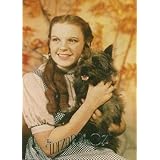Have you ever found yourself completely engrossed in watching a baby? Perhaps your own little one, a grandchild, or a friend’s bundle of joy? There is a universal charm. Their spontaneous reactions brighten any room. The delightful video above perfectly captures these instances. It shows many adorable and funny baby moments. It’s truly a showcase of pure, unfiltered happiness.
Every parent knows the feeling. A tiny giggle can change your whole day. A curious sound makes you smile. These moments are more than just cute. They are vital steps in a baby’s growth. They form the early connections. Understanding these sounds is key.
Capturing Those Contagious Giggles
Baby laughter is incredibly infectious. It often starts as a small chuckle. Then it blossoms into full-blown giggles. These sounds are truly heart-melting. A baby’s laugh comes from deep inside. It reflects pure joy. This joy is often shared freely. It is shared without reservation. The video highlights many such instances. These cute baby moments bring smiles to everyone.
Babies may laugh for simple reasons. A silly face can prompt it. A tickle often works wonders. A peek-a-boo game is usually effective. Even an unexpected sound can trigger it. Early laughter shows social development. It indicates emotional understanding. It is a wonderful form of communication. It shows they are engaging with their world. It also builds strong bonds. Parents cherish these sound so much.
Sometimes, laughter is an expression of surprise. A sudden noise can be funny. An unexpected movement can be amusing. These reactions are genuine. They are not faked. They simply burst forth. Witnessing this brings immense happiness. It reminds us of life’s simple pleasures. Each giggle is a memory in the making.
Understanding Early Baby Sounds
Long before words, babies communicate. They use many different sounds. Babbling is a crucial part. It is a baby’s first step. It is a step toward speaking. The video features many babies babbling. They make “ah-ah” or “ba-ba” sounds. These sounds are more than just noise. They are practice for later speech.
Different stages of babbling are recognized. Cooing often comes first. This happens around two months. It involves soft vowel sounds. Then comes canonical babbling. This occurs around six to nine months. Repetitive consonant-vowel sounds are heard. “Ba-ba-ba” or “ma-ma-ma” are common. These sounds might not mean anything yet. However, they are building blocks. They help babies form sounds. They prepare for real words.
Passive listening is important. Parents are often encouraged to respond. Responding to babbling helps. It reinforces their efforts. It shows their sounds matter. This encourages more vocalization. A baby learns that their voice has power. It can get attention. It can initiate interaction. This is a huge milestone. It leads to greater language development. This early communication is fascinating to observe.
The Journey to First Words
The progression from babble is amazing. It gradually shifts towards meaningful words. For instance, “mama” or “dada” are common first words. These words are often heard around 10 to 14 months. They are usually learned through repetition. The adult in the video often prompts “Mama?” This is a typical interaction. It helps solidify these important sounds. These words are loaded with meaning. They signify a connection to loved ones. They are a big step in a child’s world.
Many factors contribute to this progress. Exposure to language is vital. Interaction with caregivers is key. Reading books helps immensely. Singing songs also plays a role. These activities provide rich input. They help babies connect sounds to meanings. The brain is busy processing all of this. It is truly an incredible process. The sounds featured in the video are part of this journey.
Why Baby’s Funny Faces Are Irresistible
Babies often make the funniest faces. These expressions are pure and unplanned. They can be surprising. They can be utterly hilarious. The video shows many such instances. A baby might purse their lips. Another might scrunch their nose. These expressions are natural. They are part of exploring their world. They are also part of developing their facial muscles.
Sometimes, these funny faces are reactions. A new taste can cause one. Seeing something strange can too. Even the sensation of squeezing a lemon, as shown in the video, can create unique expressions. These moments are treasured. They are often captured in photos or videos. These funny baby moments often become family legends. They are revisited and laughed about for years. They add so much warmth to family life. They create lasting memories for everyone involved.
Babies are also learning about emotions. They mimic what they see. They try out different expressions. These actions are part of their learning process. They are understanding social cues. They are developing their own personality. Every funny face is a tiny experiment. It is a step towards understanding the world. These innocent explorations are simply adorable.
Nurturing Your Little One’s Voice
Parents play a huge role. They can encourage early communication. Simply talking to your baby helps. Describe what you are doing. Narrate your day to them. Use simple language. Speak clearly and slowly. This input is absorbed by their growing minds. It provides a foundation for speech. It builds their vocabulary, even passively.
Reading aloud is also powerful. Even very young babies benefit. They love the sound of your voice. They see the colorful pictures. They start to connect words with images. Pointing to objects helps too. Say the name of the object. This reinforces learning. It makes the world more understandable. These shared moments are invaluable. They are about more than just words. They are about connection and love.
Responding to their sounds is crucial. If your baby babbles, babble back. Mimic their sounds. Take turns making noises. This teaches them about conversation. It shows that their vocalizations matter. It builds confidence. It encourages them to make more sounds. This back-and-forth interaction is called “serve and return.” It is vital for development. It fosters a strong bond between parent and child.
From Babble to “Mama” and “Dada”
The first actual words are a huge milestone. They are often anticipated eagerly. The video shows babies attempting “Mama.” This effort is sweet to hear. It signifies a new stage. It shows their understanding has grown. They are no longer just making sounds. They are connecting sounds to specific people. This is a monumental step.
These early words are often simple. They are usually related to daily life. Names of family members are common. “Ball” or “dog” are also popular. Consistency helps them learn. Hearing words repeatedly is key. Using context makes it easier. For example, pointing to the ball while saying “ball.” These cute baby moments of learning are truly special. They mark a significant point in their development. They show how much babies are absorbing every day. The journey from babbling to speech is a fascinating one.







